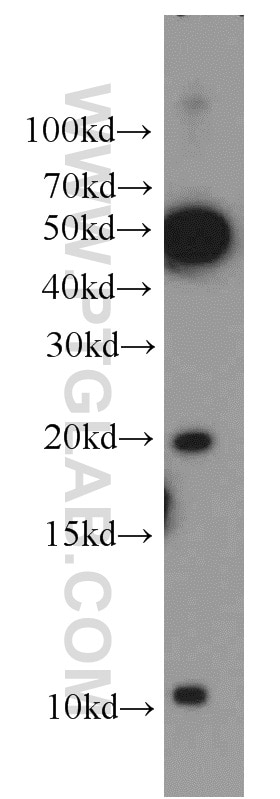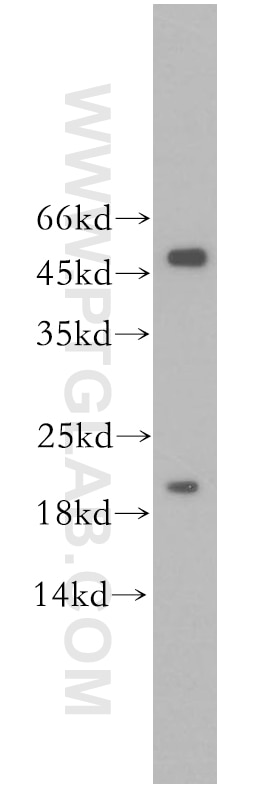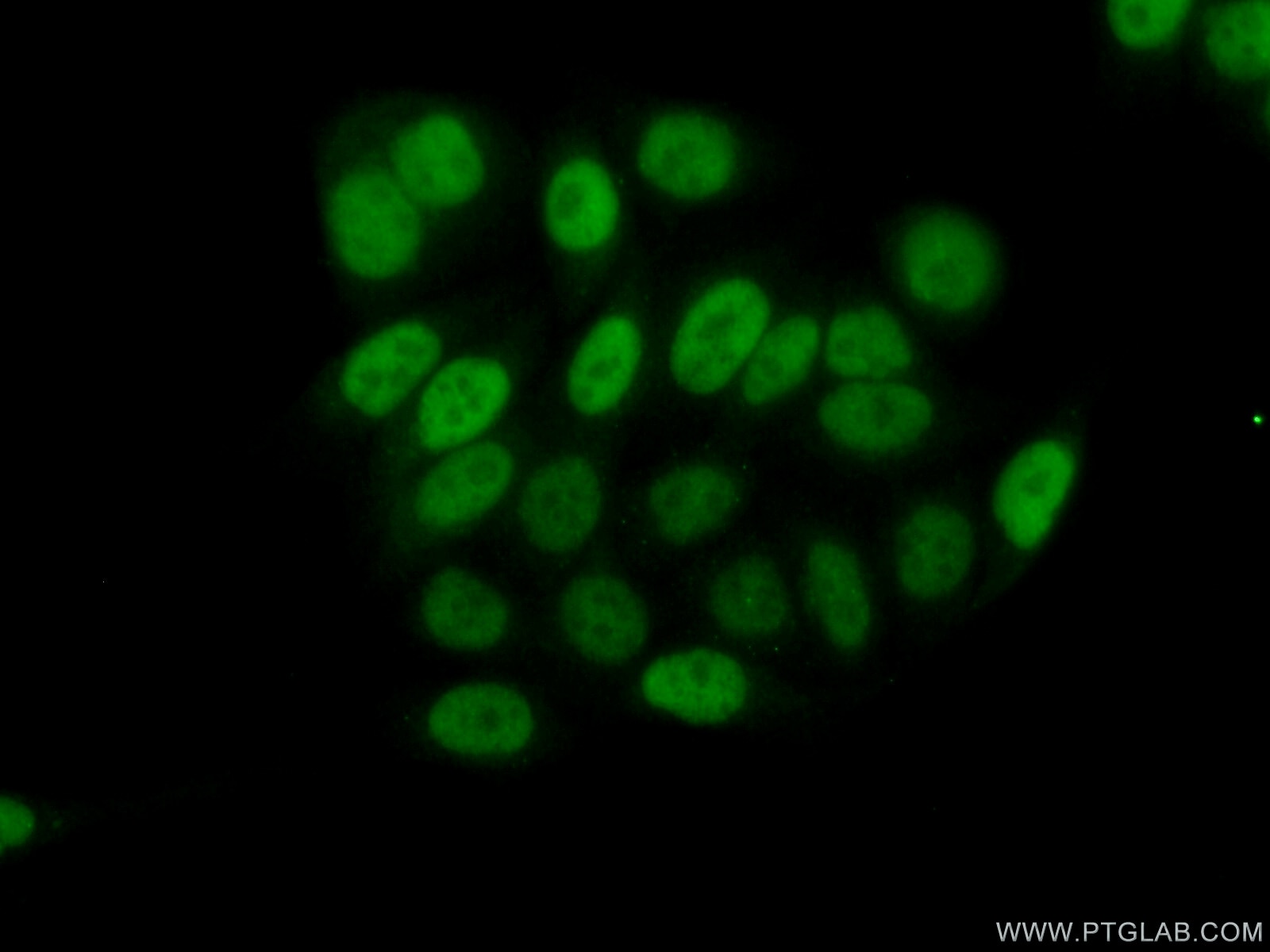- Phare
- Validé par KD/KO
Anticorps Polyclonal de lapin anti-ID1
ID1 Polyclonal Antibody for WB, IF, ELISA
Hôte / Isotype
Lapin / IgG
Réactivité testée
Humain, rat, souris
Applications
WB, IHC, IF/ICC, ELISA
Conjugaison
Non conjugué
N° de cat : 18475-1-AP
Synonymes
Galerie de données de validation
Applications testées
| Résultats positifs en WB | cellules PC-3 |
| Résultats positifs en IF/ICC | cellules PC-3 |
Dilution recommandée
| Application | Dilution |
|---|---|
| Western Blot (WB) | WB : 1:500-1:1000 |
| Immunofluorescence (IF)/ICC | IF/ICC : 1:50-1:500 |
| It is recommended that this reagent should be titrated in each testing system to obtain optimal results. | |
| Sample-dependent, check data in validation data gallery | |
Applications publiées
| KD/KO | See 1 publications below |
| WB | See 13 publications below |
| IHC | See 1 publications below |
| IF | See 5 publications below |
Informations sur le produit
18475-1-AP cible ID1 dans les applications de WB, IHC, IF/ICC, ELISA et montre une réactivité avec des échantillons Humain, rat, souris
| Réactivité | Humain, rat, souris |
| Réactivité citée | rat, Humain, souris |
| Hôte / Isotype | Lapin / IgG |
| Clonalité | Polyclonal |
| Type | Anticorps |
| Immunogène | ID1 Protéine recombinante Ag13359 |
| Nom complet | inhibitor of DNA binding 1, dominant negative helix-loop-helix protein |
| Masse moléculaire calculée | 16 kDa |
| Poids moléculaire observé | 20 kDa |
| Numéro d’acquisition GenBank | BC000613 |
| Symbole du gène | ID1 |
| Identification du gène (NCBI) | 3397 |
| Conjugaison | Non conjugué |
| Forme | Liquide |
| Méthode de purification | Purification par affinité contre l'antigène |
| Tampon de stockage | PBS avec azoture de sodium à 0,02 % et glycérol à 50 % pH 7,3 |
| Conditions de stockage | Stocker à -20°C. Stable pendant un an après l'expédition. L'aliquotage n'est pas nécessaire pour le stockage à -20oC Les 20ul contiennent 0,1% de BSA. |
Informations générales
ID (inhibitor of DNA binding) proteins contain a helix-loop-helix (HLH) motif and regulate tissue-specific transcription within several cell lineages. They do not bind DNA directly, but inhibit lineage commitment by binding basic helix-loop-helix (bHLH) transcription factors through their HLH motif. ID1 proteins lack a basic DNA-binding domain but are able to form heterodimers with other HLH proteins, thereby inhibiting DNA binding. ID proteins contribute to cell growth, senescence, differentiation, and angiogenesis. Inhibitor of differentiation or DNA binding-1 (ID1) interacts with the transactivation domain of p65 (p65TAD) both in vitro and in vivo. The molecular weight of ID1 is about 20 kDa.
Protocole
| Product Specific Protocols | |
|---|---|
| WB protocol for ID1 antibody 18475-1-AP | Download protocol |
| IF protocol for ID1 antibody 18475-1-AP | Download protocol |
| Standard Protocols | |
|---|---|
| Click here to view our Standard Protocols |
Publications
| Species | Application | Title |
|---|---|---|
Nat Commun ID1 expressing macrophages support cancer cell stemness and limit CD8+ T cell infiltration in colorectal cancer | ||
Basic Res Cardiol The miR-182/Myadm axis regulates hypoxia-induced pulmonary hypertension by balancing the BMP- and TGF-β-signalling pathways in an SMC/EC-crosstalk-associated manner | ||
EMBO J Defining multistep cell fate decision pathways during pancreatic development at single-cell resolution. | ||
Clin Transl Med Ursodesoxycholic acid alleviates liver fibrosis via proregeneration by activation of the ID1-WNT2/HGF signaling pathway. | ||
Environ Health Perspect Exposure to ambient air fine particulate matter prevents VEGF-induced mobilization of endothelial progenitor cells from the bone marrow. | ||
Acta Pharmacol Sin Pantoprazole ameliorates liver fibrosis and suppresses hepatic stellate cell activation in bile duct ligation rats by promoting YAP degradation |




